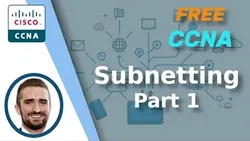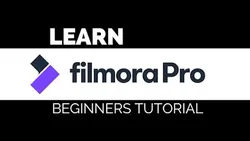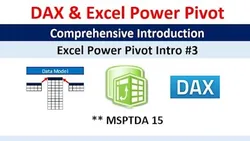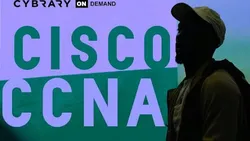
Free CCNA Subnetting (Part 1) Day 13 CCNA 200-301 Complete Course 
This course covers the basics of IPv4 address classes, assignment, CIDR notation, and subnetting. It provides an introduction to the concepts and then goes into detail on the number of usable addresses per subnet, CIDR /31 and /32 notation, and a subnetting scenario. It also includes a quiz to test understanding. ▼
ADVERTISEMENT
Course Feature
![]() Cost:
Cost:
Free
![]() Provider:
Provider:
Youtube
![]() Certificate:
Certificate:
Paid Certification
![]() Language:
Language:
English
![]() Start Date:
Start Date:
On-Demand
Course Overview
❗The content presented here is sourced directly from Youtube platform. For comprehensive course details, including enrollment information, simply click on the 'Go to class' link on our website.
Updated in [February 21st, 2023]
What does this course tell?
(Please note that the following overview content is from the original platform)
Introduction.
Things we'll cover.
IPv4 Address Classes.
IPv4 Address Assignment.
CIDR.
Number of usable addresses per subnet.
CIDR: /31.
CIDR: /32.
CIDR Notation.
Subnetting Scenario.
Quiz.
We consider the value of this course from multiple aspects, and finally summarize it for you from three aspects: personal skills, career development, and further study:
(Kindly be aware that our content is optimized by AI tools while also undergoing moderation carefully from our editorial staff.)
This course provides an introduction to the fundamentals of subnetting, including IPv4 address classes, IPv4 address assignment, CIDR, number of usable addresses per subnet, CIDR /31 and /32, and CIDR notation. It also provides a subnetting scenario and quiz to help learners understand the concepts.
Learners who complete this course can develop their career paths in network engineering, system administration, and IT security. They can also pursue further education in computer science, information technology, and network engineering.
Learners should supplement their learning with additional resources such as books, online tutorials, and practice tests. They should also practice subnetting on their own to gain a better understanding of the concepts. Additionally, they should explore related topics such as IP addressing, routing protocols, and network security.
[Applications]
After completing this course, participants are encouraged to apply the concepts learned to their own networks. They should be able to identify IPv4 address classes, assign IPv4 addresses, understand CIDR notation, calculate the number of usable addresses per subnet, and apply CIDR: /31 and /32. Additionally, they should be able to solve subnetting scenarios.
[Career Paths]
1. Network Administrator: Network administrators are responsible for managing, maintaining, and troubleshooting computer networks. They are responsible for ensuring that the network is secure, reliable, and running optimally. They also monitor network performance and make adjustments as needed. As technology advances, network administrators must stay up to date on the latest trends and developments in order to keep their networks running smoothly.
2. Network Engineer: Network engineers are responsible for designing, implementing, and maintaining computer networks. They must have a deep understanding of network protocols, routing, and switching technologies. They must also be able to troubleshoot network issues and develop solutions to improve network performance. As technology advances, network engineers must stay up to date on the latest trends and developments in order to keep their networks running optimally.
3. Network Security Analyst: Network security analysts are responsible for protecting computer networks from malicious attacks. They must have a deep understanding of network security protocols and technologies. They must also be able to identify potential security threats and develop solutions to mitigate them. As technology advances, network security analysts must stay up to date on the latest trends and developments in order to keep their networks secure.
4. Network Architect: Network architects are responsible for designing and implementing computer networks. They must have a deep understanding of network protocols, routing, and switching technologies. They must also be able to develop solutions to improve network performance and scalability. As technology advances, network architects must stay up to date on the latest trends and developments in order to keep their networks running optimally.
Course Provider

Provider Youtube's Stats at AZClass
Over 100+ Best Educational YouTube Channels in 2023.
Best educational YouTube channels for college students, including Crash Course, Khan Academy, etc.
AZ Class hope that this free Youtube course can help your Cisco Certification skills no matter in career or in further education. Even if you are only slightly interested, you can take Free CCNA Subnetting (Part 1) Day 13 CCNA 200-301 Complete Course course with confidence!
Discussion and Reviews
0.0 (Based on 0 reviews)
Explore Similar Online Courses

FilmoraPro Tutorial - Designed for Beginners

MSPTDA 15: Comprehensive Introduction to Excel Power Pivot DAX Formulas and DAX Functions

Python for Informatics: Exploring Information

Social Network Analysis

Introduction to Systematic Review and Meta-Analysis

The Analytics Edge

DCO042 - Python For Informatics

Causal Diagrams: Draw Your Assumptions Before Your Conclusions

Whole genome sequencing of bacterial genomes - tools and applications

CCNA (Cisco Certified Network Associate) Course

Packet Tracer labs for the CCNA 200-301 exam: Practical labs


Start your review of Free CCNA Subnetting (Part 1) Day 13 CCNA 200-301 Complete Course